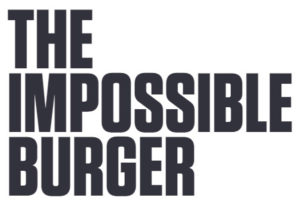Cornucopia’s Take: Many highly processed plant-based foods are currently on the market masquerading as health food. Cornucopia believes people should have access to the healthiest and most nutritious food, and no matter what your dietary choice, purchasing authentic organic food should be of paramount importance. Eaters should also avoid hexane-extracted soy protein, found in many conventional vegetarian and vegan processed foods.
FDA casts doubt on safety of Impossible Burger’s key GMO ingredient
The Huffington Post
by Ken Roseboro, Editor, The Organic & Non-GMO Report
 Agency told lab meat manufacturer it hadn’t demonstrated safety of burger’s genetically engineered heme, which has never been in the food supply. Company put product on the market anyway.
Agency told lab meat manufacturer it hadn’t demonstrated safety of burger’s genetically engineered heme, which has never been in the food supply. Company put product on the market anyway.
The U.S. Food and Drug Administration told the manufacturer of the meat-like Impossible Burger that the company hadn’t demonstrated the safety of the product’s key genetically engineered ingredient, according to internal FDA documents. Despite FDA’s concerns, Impossible Foods put its GMO-derived burger on the market for public consumption.
GMO ingredient gives product meat-like taste and red blood-like color
The Impossible Burger is made using a genetically engineered form of a protein called soy leghemoglobin (SLH) or “heme” that is found in the root nodules of soybean plants. Impossible Foods adds an SLH gene to a yeast strain, which is then grown in vats using a fermentation process. The SLH or heme is then isolated from the yeast and added to the Impossible Burger. Heme gives the Impossible Burger its meat-like taste and blood-like red color.
Impossible Foods claims its product “uses about 75 percent less water, generates about 87 percent fewer greenhouse gases and requires around 95 percent less land than conventional ground beef from cows. It’s produced without hormones, antibiotics, cholesterol or artificial flavors.”
The GMO-derived Impossible Burger is sold in 43 restaurants nationwide, including several burger chains, and Impossible Foods has attracted significant funding from investors such as Bill Gates.
FDA: Arguments “do not establish safety of SLH for consumption”
According to documents obtained by ETC Group and Friends of the Earth U.S. through the Freedom of Information Act (FOIA), Impossible Foods submitted an application to seek GRAS (generally recognized as safe) status for SLH from the FDA in 2014. The FDA’s 1997 GRAS notification policy allows a manufacturer, like Impossible Foods, to decide for itself, without FDA input, whether or not a product is safe.
But the FDA warned Impossible Foods that SLH would not meet the basic GRAS status. The FOIA-produced documents state that the “FDA believes that the arguments presented, individually and collectively do not establish the safety of SLH for consumption, nor do they point to a general recognition of safety.”
According to Michael Hansen, senior scientist at Consumers Union, Impossible Foods claimed that the engineered SLH/heme was identical to the SLH that has been in the food supply but the company had no safety testing data to back that claim.
“You are taking something that has never been in the food supply before and you come to the FDA, say it is GRAS, and you have no safety data, particularly from feeding studies,”Hansen said. “Their argument has literally come down to saying this is exactly identical to the heme we’ve always been eating, but it’s not true.”
In discussion with FDA, Impossible Foods also admitted that up to a quarter of its heme ingredient was composed of 46 “unexpected” additional proteins, some of which are unidentified and none of which were assessed for safety in the dossier.
“It’s only 73 percent pure, the other 27 percent is from proteins from the genetically engineered yeast that produces it, and these have an unknown function,” Hansen says.
According to the FOIA documents, Impossible Foods withdrew its GRAS application in November of 2015.
Despite the FDA’s warnings, Impossible Foods went ahead and started selling the Impossible Burger in 2016.
“The FDA told Impossible Foods that its burger was not going to meet government safety standards, and the company admitted it didn’t know all of its constituents. Yet it sold it anyway to thousands of unwitting consumers. Responsible food companies don’t treat customers this way,” says Jim Thomas of ETC Group. “Impossible Foods should pull the burgers from the market unless and until safety can be established by the FDA and apologize to those whose safety it may have risked.”
David Bronner: “totally unethical to market and feed an untested protein”
A recent New York Times article brought the controversy over the Impossible Burger to light.
In response to the article, Impossible Foods issued a press release attesting to the safety of its product. The company said that “a panel of food safety and allergy experts at three universities unanimously reaffirmed last week that soy leghemoglobin is generally recognized as safe.”
Impossible Foods also said it will voluntarily provide the results of a study feeding rats SLH and “additional data to the U.S. Food and Drug Administration.”
Yet, Impossible Foods is submitting feeding study results to the FDA after the product has been on the market for a year.
“It’s very troubling that Impossible Foods has put this product on the market and, more than one year later, still has not submitted requested safety data, including a rat feeding study, to FDA,” Hansen said.
David Bronner, president of Dr. Bronner’s Magic Soaps and plant-based foods advocate, had earlier expressed support for the Impossible Burger as a solution to environmental problems caused by industrial meat production. But the recent revelations have changed Bronner’s opinion.
“While there is great potential good that the Impossible Burger could do, it’s totally unethical to market and feed an untested protein to people and claim that it is identical to what we already eat,” he says.
Major loopholes in FDA food safety regulations
The fact that companies like Impossible Foods can request GRAS status, then withdraw the application when the FDA raises concerns, and yet still put a product on the market shows major loopholes in FDA food safety regulations, according to Hansen.
“The GRAS process is so broken. It’s perfectly legal for a company to say whatever compound they want to use is determined to be safe and then put it in the food supply and not even tell the FDA.”
Another major loophole is that, while the FDA conducts reviews of genetically engineered plants and animals, the agency doesn’t review products made using genetically engineered microorganisms like the Impossible Burger’s heme.
“The FDA doesn’t even request safety data,” Hansen says.
Hansen believes the GMO heme should be regulated as a color additive because Impossible Foods promotes heme’s ability to give the burger a blood-red color like meat. The FDA requires safety assessments of color additives.
“If it affects color and marketability, it meets the definition of a color additive and should be regulated as such,” he says.

